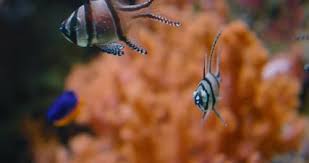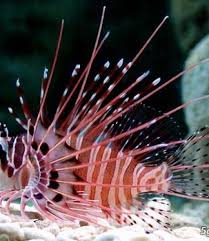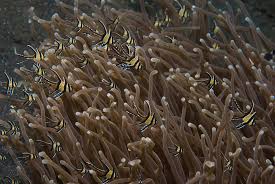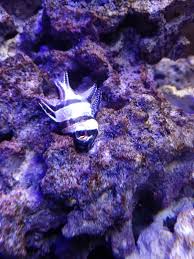Dragons (lóng, 龙) have been an integral part of Chinese art for centuries, serving as powerful symbols of strength, wisdom, and divine protection. Among the many artistic forms in which dragons appear, ink wash painting (水墨画, shuǐmòhuà) holds a special place in Chinese cultural history. This unique form of art, developed over thousands of years, captures the fluidity, energy, and mysticism of dragons in a way that no other medium can.
From ancient imperial scrolls to modern artistic interpretations, the depiction of dragons in Chinese painting reflects deep philosophical, religious, and cultural meanings. This article explores the evolution of dragon imagery in ink wash paintings, its symbolic importance, techniques used by artists, and its enduring legacy in Chinese art.
1. The Symbolism of Dragons in Chinese Painting
1.1. The Dragon as a Celestial and Imperial Symbol
In Chinese culture, dragons are associated with:
- The Emperor and imperial authority
- The forces of nature, such as wind, rain, and storms
- Wisdom, longevity, and supernatural power
Since the time of the Han Dynasty (206 BCE–220 CE), Chinese emperors have been considered “Sons of the Dragon” (龙的传人, Lóng de Chuánrén). As a result, many royal artworks prominently feature dragons, often depicted soaring through clouds or emerging from turbulent waters.
1.2. Yin-Yang Balance and the Five Elements
In Taoist philosophy, dragons are linked to the concept of yin-yang (阴阳) and the Five Elements (五行, wǔxíng):
- Wood (木) – Associated with growth and vitality
- Fire (火) – Represents energy and transformation
- Earth (土) – Symbolizes stability and protection
- Metal (金) – Embodies strength and authority
- Water (水) – Reflects adaptability and wisdom
In ink wash paintings, dragons are often shown interacting with these elements, symbolizing the cosmic balance between nature and humanity.
2. The Evolution of Dragons in Chinese Painting
2.1. Early Depictions in Han and Tang Dynasties
The earliest artistic depictions of dragons appear in Han Dynasty (206 BCE–220 CE) tomb murals and Tang Dynasty (618–907 CE) court paintings. These images were often:
- Painted on silk or paper scrolls
- Used to decorate royal palaces and temples
- Portrayed dragons as elongated, snake-like creatures with horns, claws, and whiskers
The Tang Dynasty saw an increase in Buddhist and Taoist influences, leading to dragon paintings being used for religious and spiritual purposes.
2.2. Song Dynasty (960–1279): The Rise of Ink Wash Techniques
The Song Dynasty marked a turning point in the way dragons were depicted in Chinese paintings. Artists such as Li Gonglin (李公麟) and Su Shi (苏轼) developed sophisticated ink wash techniques to express movement, energy, and spontaneity.
- Ink wash painting (水墨画) became the dominant style
- Artists used varying brush pressures to create soft, flowing dragon forms
- Dragons were often painted emerging from mist or clouds, reinforcing their divine and mysterious nature
2.3. Ming and Qing Dynasties: Highly Detailed Dragon Paintings
During the Ming (1368–1644) and Qing (1644–1912) Dynasties, dragons became more elaborate in Chinese paintings. Court artists created:
- Gold and blue dragons in highly detailed silk paintings
- Dragons coiled around pillars and scrolls, symbolizing imperial power
- Landscapes featuring dragons, blending myth with nature
Artists such as Chen Rong (陈容) became famous for their dynamic dragon ink paintings, which captured the creature’s power with fluid brushstrokes.
3. Techniques Used in Dragon Ink Wash Painting
3.1. The “Flying White” Technique (飞白, Fēi Bái)
This method uses dry brushstrokes to create a sense of motion. It is often applied to dragon whiskers, clouds, and water, making the painting feel alive and energetic.
3.2. Contrast Between Light and Dark Ink
Chinese artists masterfully use different ink tones to emphasize depth and dimension:
- Light ink (淡墨, dànmò) for mist, air, and movement
- Dark ink (浓墨, nóngmò) for powerful strokes, such as dragon scales and claws
3.3. Spontaneous Brushwork (写意, Xiěyì)
Unlike meticulous court paintings, many dragon ink wash paintings focus on expressive, free-flowing strokes. This style reflects the Taoist philosophy of spontaneity, emphasizing the dragon’s wild and untamed nature.
4. The Role of Dragons in Different Painting Styles
4.1. Dragons in Landscape Paintings (山水画, Shānshuǐ Huà)
One of the most unique features of Chinese art is the integration of dragons into natural landscapes. In many paintings, dragons appear as:
- Part of mountain formations, blending with rocks and cliffs
- Hidden in mist or water, symbolizing the connection between nature and spirit
- Guardians of sacred sites, such as temples or celestial realms
This approach highlights the belief that dragons are forces of nature rather than mere mythical creatures.
4.2. Dragons in Calligraphy-Inspired Paintings
In the Qing Dynasty, artists combined calligraphy and dragon imagery, treating dragon forms as flowing, poetic brushstrokes. This style emphasizes:
- The rhythmic movement of the dragon’s body
- The harmony between written characters and artistic expression
- The idea that dragons embody the spirit of Chinese culture
One famous saying compares a skilled artist’s brushwork to “a dragon soaring through the sky” (笔走龙蛇, bǐ zǒu lóng shé).
5. Dragons in Modern Chinese Ink Painting
5.1. Contemporary Artists and Their Dragon Motifs
Today, many modern Chinese painters continue to explore dragon themes. Some notable artists include:
- Xu Beihong (徐悲鸿) – Combined Western realism with Chinese brush techniques
- Wu Guanzhong (吴冠中) – Created abstract dragon forms using bold ink strokes
- Ai Xuan (艾轩) – Depicts dragons as part of surreal, dreamlike landscapes
5.2. Dragons in International Art Exhibitions
Chinese dragon paintings have gained recognition in global exhibitions, particularly in:
- Museum collections in the U.S. and Europe
- Contemporary ink wash exhibitions in Beijing and Shanghai
- Tattoo and street art inspired by traditional Chinese dragon motifs
Despite the changes in artistic trends, dragons remain a timeless symbol of strength, heritage, and spirituality in Chinese painting.
Conclusion: The Eternal Presence of Dragons in Chinese Painting
From imperial murals to modern ink wash masterpieces, dragons have consistently been a central theme in Chinese painting. These mythical creatures are not just symbols of power and protection but also expressions of artistic philosophy, spontaneity, and cultural identity.
Ink wash painting, with its fluid, expressive brushstrokes, captures the spirit and dynamism of dragons like no other medium. As China’s art continues to evolve, dragons remain an enduring inspiration—representing the country’s rich heritage, artistic mastery, and deep connection to nature.










